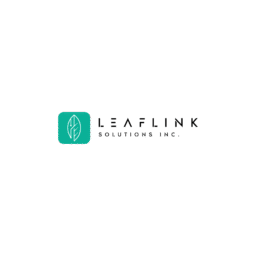Introduction
Financial wellness is an increasingly critical topic, especially among millennials trying to navigate complex economic realities. This article explores the financial journey of a typical millennial family, shedding light on the challenges they face and the strategies they employ to achieve financial independence. By analyzing their experiences, we can glean valuable insights that may benefit a broader audience seeking to enhance their financial health.
Overview of the Family’s Background
Consider a millennial family, consisting of a couple in their early thirties with two children living in an urban setting. Both partners have completed higher education and are employed in middle-income jobs. They embody the quintessential millennial experience, grappling with the balance between professional aspirations, family responsibilities, and financial stability. Their background is vital to understanding the specific challenges and strategies they will face on their financial wellness journey.
Importance of Financial Wellness for Millennials
Financial wellness goes beyond just having money; it encompasses the ability to manage financial resources effectively to ensure long-term security and peace of mind. For millennials, achieving financial wellness is particularly important as they face unique challenges such as student loan debt, rising living costs, and economic instability. By prioritizing financial health, millennials can set a positive example for their children, fostering a culture of financial literacy and responsibility.
Financial Challenges Faced
Student Loan Debt
One of the most pressing issues for millennials is student loan debt, which has reached unprecedented levels. Many graduates start their careers burdened with debt that can exceed $30,000, impacting their ability to save, invest, or purchase a home. The monthly payments often consume a significant portion of their income, leading to a cycle of financial strain. This debt can hinder their overall financial wellness, making it essential to address it strategically.
High Cost of Living
In addition to student loans, millennials are grappling with high living costs, particularly in urban areas where housing, transportation, and childcare expenses are soaring. Rent often consumes a large percentage of their monthly budget, leaving little for savings or discretionary spending. This financial pressure can lead to significant stress, impacting not only their financial wellness but also their mental health and family dynamics.
Job Market Instability
The job market presents another challenge. Many millennials entered the workforce during or just after the Great Recession, which has shaped their career paths. Job stability is often elusive, with many resorting to gig work or contract positions that lack benefits and job security. This instability can make it difficult for families to plan for the future, contributing to a sense of financial insecurity.
Health Care Expenses
Health care costs are another burden for many families. Despite having health insurance, out-of-pocket expenses can lead to significant financial strain. High premiums, deductibles, and co-pays can consume a substantial part of a family’s budget, often forcing them to choose between necessary medical care and other essential expenses. This reality further complicates their financial wellness journey.
Budgeting and Saving Strategies 
Creating a Comprehensive Budget
To tackle these challenges, the millennial family began by creating a comprehensive budget, detailing all income sources and expenses. This process helps them visualize their financial landscape and identify areas for improvement. By categorizing expenses into essentials and non-essentials, they can prioritize their spending, ensuring that they meet crucial obligations while finding ways to cut back on discretionary items.
Emergency Fund Establishment
Establishing an emergency fund is a fundamental step toward financial security. This family set a goal of saving three to six months’ worth of living expenses in a separate account. The peace of mind that comes from having a financial safety net allows them to tackle unexpected expenses—such as medical emergencies or home repairs—without derailing their overall financial plan.
Automating Savings
To ensure consistent savings, the family decided to automate their savings contributions. By setting up automatic transfers to their savings account each month, they make saving a priority without needing to remember to do it actively. This strategy ensures that saving becomes a seamless part of their financial routine, helping them gradually accumulate wealth over time.
Cutting Unnecessary Expenses
Reviewing their budget highlighted several areas where the family could cut unnecessary expenses, such as subscription services or dining out. By adopting a more mindful approach to spending, they can redirect those funds toward savings or debt repayment. This practice encourages a more frugal lifestyle, which can be beneficial in the long run, especially in an ever-changing economic environment.
Investment Options for Growth
Retirement Accounts (401(k), IRA) 
Investing for the future is a crucial part of achieving financial wellness. This family prioritized contributing to retirement accounts such as a 401(k) and an Individual Retirement Account (IRA). By taking advantage of employer matching contributions, they maximize their investments and ensure they are on track for a comfortable retirement. Early and consistent contributions can lead to significant growth over time, thanks to the power of compound interest.
Stock Market Investments
In addition to retirement accounts, the family explored stock market investments as a way to build wealth. They began by researching mutual funds and exchange-traded funds (ETFs), which provide diversification and lower risk compared to individual stocks. This approach allows them to participate in the market without needing extensive expertise while contributing to their long-term financial goals.
Real Estate Opportunities
Real estate presents another avenue for investment. The family considered purchasing a rental property, viewing it as a potential source of passive income. By researching the market and understanding the responsibilities of being landlords, they recognized the long-term benefits of real estate investment. A well-managed property can generate consistent cash flow while also appreciating in value, further enhancing their financial portfolio.
Passive Income Streams
Establishing passive income streams is vital for long-term financial wellness. This family explored opportunities such as creating an online business or investing in dividend-producing stocks. By generating income that does not require substantial ongoing effort, they can supplement their earnings, allowing them to focus on other aspects of their lives while still building wealth.
Conclusion
Summary of Key Strategies
The journey to financial wellness for millennials is fraught with challenges, but it is not insurmountable. By identifying financial obstacles such as student loan debt, high living costs, job market instability, and health care expenses, families can devise effective strategies to overcome them. Key strategies include creating a comprehensive budget, establishing an emergency fund, automating savings, and cutting unnecessary expenses. Additionally, investing in retirement accounts, stock markets, real estate, and passive income opportunities can significantly enhance financial growth and security.
The Impact of Financial Wellness on Future Generations
Ultimately, the financial decisions made by millennials today will shape the financial literacy and wellness of future generations. By taking proactive steps to improve their financial health, this family not only secures their financial future but also sets a positive example for their children. Teaching the importance of budgeting, saving, and investing creates a legacy of financial responsibility that can benefit families for years to come.
FAQs
What are some effective budgeting tools for millennials?
Some popular budgeting tools include apps like Mint, YNAB (You Need A Budget), and PocketGuard, which can help track expenses, create budgets, and visualize financial goals.
How can I tackle student loan debt effectively?
Strategies for tackling student loan debt include exploring income-driven repayment plans, refinancing for lower interest rates, and making extra payments when possible to reduce overall interest costs.
What percentage of income should I save for emergencies?
Aim to save at least 3 to 6 months’ worth of living expenses in your emergency fund. This amount provides a financial buffer in case of unexpected expenses or loss of income.
Is real estate a good investment for millennials?
Yes, real estate can be a good investment for millennials, particularly if they conduct thorough research and understand the market. It can provide rental income and potential appreciation in property value over time.
How can I start investing in the stock market?
To begin investing in the stock market, consider starting with a brokerage account, researching mutual funds or ETFs, and gradually learning about individual stocks as you gain confidence.



